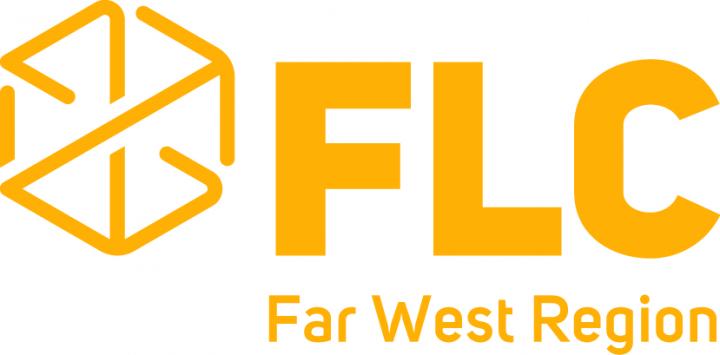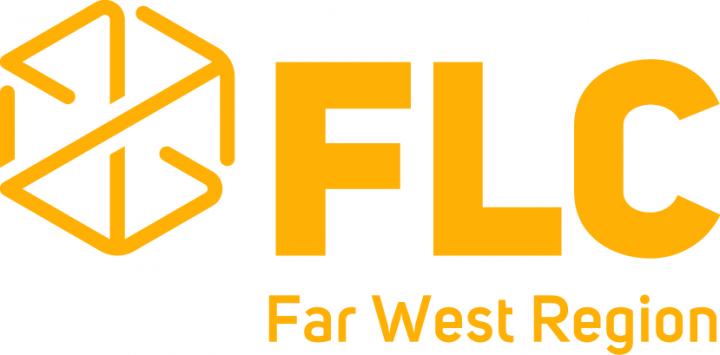
Credit: Federal Laboratory Consortium
Idaho National Laboratory has been honored with two Federal Laboratory Consortium (FLC) Awards in 2018 in the Far West Region. The FLC is a formally chartered organization mandated by Congress to promote, educate and facilitate technology transfer among more than 300 federal laboratories, research centers and agencies nationwide. The Far West region, which includes over 50 laboratories in the Western states of Alaska, Arizona, California, Hawaii, Nevada, Oregon, Washington and Idaho, honors achievements by member laboratories each year in a number of categories.
INL's winners will be recognized at the FLC regional meetings in late August. Congratulations to the winners!
Outstanding Partnership: Phosphate Sponge for Remediation of Toxic Algae Blooms
Gary Smith, INL commercialization manager, along with Steve Hammon and Mike Irish of industry partner Rocky Mountain Scientific Corporation were awarded the Outstanding Partnership Award for their work on a phosphate sponge that has the potential to alleviate one of the world's most challenging environmental issues: toxic algae blooms.
Phosphate pollution in U.S. waterways costs industry and taxpayers billions of dollars annually and is causing a public health crisis in the form of a toxic microorganism that thrives in phosphate-rich waters. Toxic cyanobacteria algae blooms–the green blobs of goop that are choking freshwater lakes, ponds and other waterways across the globe–feed on phosphate from sources such as sewage treatment plants, concentrated animal feeding operations and fertilizer runoff. Human activities have nearly quadrupled the amount of phosphates found naturally in freshwater.
Excessive algae concentrations produce a thick, noxious, foul-smelling plume, often with a green color. When algae die, they are eaten by bacteria which leads to a lack of dissolved oxygen in water and dead fish populations. Dense blooms also limit light penetration, which reduces the growth of plants. Further, the high rates of photosynthesis can deplete dissolved inorganic carbon and raise daytime pH to extreme levels, altering the water chemistry and unbalancing microbial bacteria. The algae blooms result in dead zones and have been linked to degradation of water quality, destruction of fisheries, and public health risks.
The phosphate sponge is designed to help solve this problem by removing phosphorous from water and preventing these toxic outbreaks before they occur. This porous bead composite material is created by combining the innovations of RMS and INL. RMS has been working for nearly a decade to remediate the phosphate pollution problem and discovered a powder that absorbs phosphorous, arsenic, fluoride and selenium from water. However, the flourlike powder was so fine that it would gum up equipment or be washed away when used alone.
INL researchers Troy Garn, Mitchell Greenhalgh and Jack Law developed a polyacrylonitrile (PAN) binder, originally designed for aqueous and/or gaseous separations in nuclear applications. INL's sorbent material is composed of the PAN binder and a zeolite sorbent component providing a large surface area while maintaining a porous media, which does not impede fluid stream processing. Initial testing of the RMS powder confirmed the feasibility of combining it with the PAN binder material.
When combined with the proprietary phosphate-absorbing component from RMS, the resulting solution was a composite filter bead that effectively absorbs phosphates and other contamination.
When contaminated water is passed through a column or bed containing phosphate sponge beads, contaminants are absorbed by ion exchange, which reduces phosphate levels in water to merely a few parts per billion, or even nondetectable levels.
Like a sponge, the beads can also be "rung out" and reused indefinitely, while the phosphates eluted from the beads can also be recycled as fertilizer feedstock ingredients. Reusing the beads is environmentally sound, and most importantly, the product is nontoxic to the environment.
This technology was awarded the FLC Far West Outstanding Technology Development Award in 2017.
Outstanding Technology Development: Autonomic Intelligent Cyber Sensor
INL researchers Todd Vollmer, Craig Rieger and Milos Manic won the Outstanding Technology Development Award for the Autonomic Intelligent Cyber Sensor (AICS), an artificial intelligence breakthrough that can protect the nation's critical infrastructure from devastating cyberattack. AICS works autonomously to give industries the power to quickly identify and divert hackers, using machine learning to identify and map industrial control systems so it can recognize anomalous network traffic, alert operators, and deploy virtual decoys to slow or halt hacking attempts.
Unlike existing rule-based cybersecurity systems, AICS recognizes anomalies, even if it has never seen them before. Following installation on an industrial control system and an initial learning phase, AICS continues to update what it knows about the control system, automatically adapting and remapping as it goes. AICS is always learning, so it is able to recognize threats even if they were unknown when AICS was first deployed on the system. AICS sets up and automatically updates decoy virtual hosts – honeypots – to distract attackers from targets, giving asset owners the ability and time to gather information that can help identify both the attacker and a potentially compromised system.
The autonomic nervous system of the human body, which regulates functions not controlled by conscious thought, is the inspiration for computer-based autonomic system structure. If the human body detects a threat, the release of hormones and neurotransmitters that communicate with body systems (heart, lungs, muscular-skeletal) are automatically triggered, preparing the body for meeting or avoiding the threat (fight or flight response). Once the threat is eliminated or avoided, the systems that make up a human body return to normal.
Like the human autonomic nervous system, AICS employs multilevel defense mechanisms to make rapid, highly specific and often very protective responses against potential threats without operator control. In place of nerves, hormones, heart and lungs, AICS contains systems for internal and external communication; and three managed resources that AICS uses to identify and locate system devices, sensors and controls, assess anomalies that could indicate the presence of hackers, and generate decoys known as honeypots to divert hacking attempts.
Because it works autonomously, AICS is able to recognize, gather information, and divert potential attacks within seconds of the appearance of an anomaly. AICS can not only respond far faster than a human operator could, it can detect and respond to intruders before system operators even know the intruder is there.
###
Learn more about AICS here.
Idaho National Laboratory is one of DOE's national laboratories. The laboratory performs work in each of DOE's strategic goal areas: energy, national security, science and environment. INL is the nation's leading center for nuclear energy research and development. Day-to-day management and operation of the laboratory is the responsibility of Battelle Energy Alliance.
See more INL news at http://www.inl.gov. Follow @INL on Twitter or visit our Facebook page at http://www.facebook.com/IdahoNationalLaboratory.
Media Contact
Leslie Wright
[email protected]
208-526-2926
@INL
Original Source
https://www.inl.gov/article/federal-laboratory-consortium-awards/





